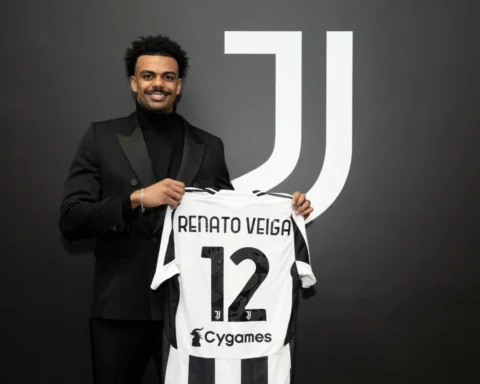As Juventus move ever closer to appointing Thiago Motta as their new coach, Corriere della Sera outline how the team will change their tactical approach from that of Massimiliano Allegri. The newspaper outline how the two managers have fundamentally different football philosophies, and the arrival of Motta promises a significant shift in how Juventus will play moving forward.
Allegri’s Reactive Football: “First, Don’t Concede”
Allegri, the outgoing Juventus manager, is known for his reactive style of play, epitomized by the adage “first, don’t concede.” His Juventus teams prioritized defensive solidity over possession, focusing on controlling space rather than the ball. This approach, which brought success during Allegri’s first stint with Juventus (2014-2019), was less effective in his second tenure (2021-2023). Allegri’s strategy often involved deep defending and quick counter-attacks.
Thiago Motta’s Active Football
In stark contrast, Thiago Motta’s approach is characterized by proactive football, emphasizing activity in both possession and non-possession phases.
Pressing and Possession
Motta’s Bologna team is known for its high pressing, aiming to win the ball back as close to the opponent’s goal as possible. This is reflected in their low PPDA (passes per defensive action) of 11.6, one of the lowest in Serie A, indicating advanced pressure.
Offensively, Motta’s style is a hybrid between positional play, which prioritizes occupying specific spaces (a philosophy popularized by Pep Guardiola), and relational play, which focuses on the position of the ball and player relationships (advocated by coaches like Carlo Ancelotti and Fernando Diniz). Positional play constructs structures first, while relational play builds fluid relationships between players.
Freedom of Movement
Motta’s hybrid model allows for flexibility. Bologna has exhibited both positional and relational styles, sometimes maintaining structure and other times allowing more fluid movement. Typically, wingers like Orsolini and Saelemaekers maintain width, while central midfielders rotate positions, and central defenders push forward, acting as both builders and invaders.
Potential Juventus Line-Up Under Motta
Motta is expected to implement a similar system at Juventus, likely employing a 4-3-3 or 4-2-3-1 formation. Key tactical changes may include:
Locatelli’s New Role
In midfield, Manuel Locatelli might see a transformation in his role. Known for his ball-handling skills and versatility at Sassuolo, Locatelli could move away from purely defensive duties under Allegri to a more dynamic role under Motta.
Defenders as Playmakers
The forward movement of central defenders, a hallmark of Motta’s style, could be facilitated by new signings like Riccardo Calafiori, who Motta seems keen to bring from Bologna.
Attacking Flexibility
Federico Chiesa might consistently play on the wing, where he excels, while Dusan Vlahovic could be tasked with both attacking the depth and creating space for midfielders arriving from behind.
Revolution and Support
Motta’s appointment represents a revolutionary shift from Allegri’s football. This transition will require patience and support from the club, especially during initial challenges. Such changes often meet resistance, and Motta may face criticism from skeptics of the new direction. However, every revolutionary movement inevitably faces reactionary forces, and Juventus must back Motta through this transformative phase.





